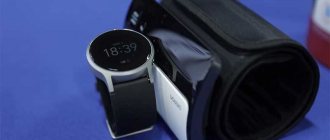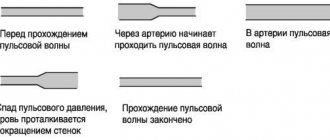HomeReviews
Natalie Vesna 10/28/2020
Average rating+4
Save to bookmarksSavedDeleted 5
Average rating+4
59673
- 0
- 0
- 1
- 3
- 2
- 6shares
If you want to better monitor your overall physiological capacity, you need to closely monitor your heart rate. Experience has shown that this can best be done using a chest heart rate monitor. In our review, we will help you choose the best chest heart rate monitor.
Why a chest heart rate monitor and not a smart watch or bracelet?
A heart rate monitor is a device that measures a person’s heart rate in real time. It is used during training and is necessary for practicing various sports disciplines:
- crossfit;
- fitness;
- power training;
- martial arts;
- run;
- skis;
- other sports.
In this case, preference should be given to the chest device. There are three main reasons for this.
- The chest heart rate monitor does not interfere with exercise. For example, a smartwatch bracelet with the function of measuring heart rate and other biometric parameters of the human body can get caught on projectiles during training with free weights or cause injury during martial arts training.
- Reliability. We have already said that the gadget can get caught on sports equipment. During such engagement it may break. But this is very often an expensive thing. A device designed to be attached to the chest is much less likely to fail during training.
- More accurate readings. The watch's heart rate sensors are located on the wrist. It is far enough away from the heart that not every heartbeat can be read by the device. Chest devices are attached to the chest, that is, in close proximity to the heart muscle. This allows them to accurately and timely read all its abbreviations and not distort the information.
Chest heart rate monitors are usually cheaper than smartwatches because they do not have any additional functions such as receiving calls on a smartphone or viewing SMS messages. They are designed for one single purpose: accurate heart rate measurement.
What should you pay attention to when choosing a device? Here are a few main parameters.
- Functional. The simplest devices can only measure your pulse. More sophisticated ones can be connected via Bluetooth to a smartphone, configured through a special application, and keep statistics of your sports activities.
- Convenience. It is important that the purchased gadget is ergonomic and that it is convenient to use. Otherwise, you will experience discomfort during training and will not fully enjoy it.
- Manufacturer. Today, the market offers both devices from famous brands and nameless Chinese products. Let’s say right away that there is no big difference between them. All gadgets cope with their tasks equally well. True, in a number of cases, the “Chinese” may differ in slightly lower quality.
- Price. The optimal choice is a device in the mid-price category. On the one hand, it will not have an inflated price due to “branding” and will not require overpayment. On the other hand, you can be sure of acceptable quality and sufficient reliability.
conclusions
When choosing a heart rate monitor for home use, it is important to remember the following:
- Manufacturers offer finger, chest and wrist devices for purchase, so you should decide in advance on the most suitable option for yourself;
- You should pay attention to such indicators as the range of measurement of pulse rate and saturation, as well as the measurement error;
- Information about the weight and dimensions of the device, the availability of useful additional options, materials used and equipment will not be superfluous.
DFC W227Q
DFC W227Q is a compact, simple Chinese-made heart rate monitor without additional functions. The device is inexpensive - from 3,000 to 4,000 rubles. A distinctive feature of this model is its fairly high measurement accuracy: the statistical measurement error of the DFC W227Q is close to zero.
The DFC W227Q runs on a CR3032 battery. The gadget can be connected to a smartphone or tablet using the built-in Bluetooth module to control it via a mobile application. The application allows you to view the device readings in real time, as well as record them and store them in the cell phone’s memory. This is very convenient for trainers: they can monitor the athlete’s performance directly during his training and stop training in a timely manner in case of health risks.
The DFC W227Q is secured to the torso with an adjustable elastic strap. The adjustment is quite wide - the device is suitable for those with a torso with a diameter of 60 to 105 centimeters. This makes the DFC W227Q suitable for use by both men, women or teenagers.
Low cost and reliability made the DFC W227Q popular and provided it with good user reviews.
DFC W227Q
Garmin HRM-Tri
Garmin HRM-Tri is a more advanced device, which is also produced in China. Unlike the previous participant in our rating, it is waterproof, which allows it to be used during swimming.
In addition to heart rate, Garmin HRM-Tri measures a number of other characteristics:
- time of contact with the ground when running;
- vertical vibrations.
The device also connects to a smartphone. The ANT+ wireless protocol is used for this. However, this model does not need a smartphone to record statistics - it has its own built-in memory. It stores all reports of body performance during exercise over the past few days. You can access them using your smartphone or tablet.
Search for Bluetooth devices
The central manager is awaiting further instructions and will receive them now. To do this, in the “centralManagerDidUpdateState” method in the case of “.poweredOn” after the “print” method we write:
centralManager.scanForPeripherals(withServices: nil)
The manager will start scanning all available devices around, and in order for us to be able to see them in the application console, we need to implement a delegate method in the extension ViewController below the “centralManagerDidUpdateState” method as follows:
func centralManager(_ central: CBCentralManager, didDiscover peripheral: CBPeripheral, advertisementData: , rssi RSSI: NSNumber) { print(peripheral) }
We launch the application... And now in the console we can see a variety of all devices available for connection. Amazing! One of them is the heart rate monitor required for connection. But to make finding a heart rate monitor easier, you can use some trick, which I will show you now.
SUUNTO Smart Sensor
SUUNTO is a well-known Finnish company that produces various products for athletes, tourists and travelers under its own brand. Among its products are heart rate monitors. One of them is SUUNTO Smart Sensor. It is simple, convenient and practical. SUUNTO Smart Sensor does not have any additional functions - it only measures heart rate, and does it quite accurately.
You can find out the heart rate monitor readings in two ways:
- by connecting it via Bluetooth to a proprietary mobile application developed by SUUNTO;
- by connecting the gadget via Bluetooth to a SUUNTO sports smartwatch.
SUUNTO Smart Sensor is available in several variations. They differ in the size of the chest strap. This allows the model to be used by people of different genders, ages, and builds.
SUUNTO Smart Sensor
Benefits of heart rate monitors
- Training safety. The device allows you to constantly monitor your pulse, preventing it from exceeding the maximum pulse (critical zone), as well as reducing the pulse, allowing you to maintain your heart rate in the desired zone.
- Training effectiveness. The heart rate monitor determines individual heart rate zones for training, both for fat burning and general strengthening. The calculation is based on the user’s personal parameters – age, gender, weight, physical fitness.
- Productivity. The device saves your workout information so you can view your total calorie burn.
Learn more about calculating heart rate zones →
Wahoo TICKR
The Wahoo TICKR is an inexpensive heart rate monitor that can be strapped to your chest, wrapped around your torso, or slung over your shoulder. The device is simple and does not have an excess of functions. It allows you to track three indicators of the human body:
- heart rate;
- analytics of movements made during classes;
- training intensity level.
The model does not have its own interface (it is limited to two LEDs that indicate whether the device is on or off). You can receive data from the gadget by connecting the device to a mobile phone or tablet using Bluetooth or ANT+ wireless protocols.
Wahoo TICKR
Operating principle of the device
Modern heart rate monitors consist of two components:
- Belt sensor.
- A receiving device, usually attached to the wrist.
The sensor belt is located on the chest, and the receiver can be:
- mobile phone;
- GPS navigator.
The sensor is equipped with electrodes that record each heartbeat. To ensure good contact with the skin, the following is used to wet the electrodes:
- special gel;
- water.
All the latest heart rate monitors have the following features:
- Shows time and date.
- They have a stopwatch.
- Timer.
- Calculation of the time the pulse spends in predefined zones.
- An audible signal alerts you to the start of leaving a given area.
The human pulse normally differs among different categories of citizens. This depends on age and the presence of pathologies.
You can enter information about yourself into the meter, namely:
- height;
- weight;
- age.
Based on this, the device is used to calculate the body mass index (this is an indicator of the presence of excess fat in the body and determines the degree of obesity), as well as calories burned during training.
Overweight people whose task is to bring their weight back to normal can calculate how many kilograms they need to lose to become slim again. It is important to know that fat begins to be burned if the pulse exceeds 120 beats per minute.
The meter is an assistant not only for athletes or people leading an active lifestyle. It can be used by anyone who cares about health at any stage of preparation for stress.
In this case, the device sets a different heart rate zone, which depends on the level of training. Everyone has the right to choose, so a person independently chooses his option from those offered.
WE RECOMMEND: Recommended yoga complexes for hypertension
REEBOK Pulse Steel RD-PUL-G0
REEBOK Pulse Steel RD-PUL-G0 is a chest-mounted heart rate monitor from a world-famous British company producing sportswear and equipment for those who play sports.
This heart rate monitor model includes a chest strap and a special electronic watch. There is no provision for connecting the device to a smartphone - all the necessary information is displayed on the display of the watch, which connects to the sensor via Bluetooth.
The REEBOK Pulse Steel RD-PUL-G0 has an alarm that goes off when the athlete's heart rate increases too much. The clock signals this.
An additional function of the REEBOK Pulse Steel RD-PUL-G0 is a stopwatch. This model has no other functions. The watch can be used without a sensor - for its intended purpose. It has a case of durable shockproof plastic, as well as water resistance of 100 atmospheres, which allows you to swim in it.
Adviсe
- Most heart rate monitors use rechargeable batteries. However, some use batteries the size of watch batteries, which sometimes require replacement.
- Not all heart rate monitors are waterproof. If you want to swim with a chest strap, choose one that is designed for water activities.
- To clean the monitor screen and heart rate sensors, gently wipe them with a soft cloth. To remove tough stains, first lightly dampen the cloth.
- Use warm soapy water to clean belts. Air dry the belts under the sun.
Polar H10 M-XXL
Polar H10 M-XXL is a professional heart rate monitor for sports with the ability to determine additional parameters of the human body. A distinctive feature of this model is its extreme convenience. If an athlete wears Polar H10 M-XXL, he simply does not notice it. The manufacturer managed to achieve such comfort thanks to an ergonomic adjustable belt made of soft and elastic polymer material.
In addition to heart rate, Polar H10 M-XXL calculates the total amount of fat consumed during training in grams.
The device does not have its own interface. You can access the information collected with its help by connecting the gadget to a mobile phone or tablet via Bluetooth and ANT+ wireless protocols.
Polar H10 M-XXL has built-in memory. This saves the athlete from the need to constantly record their performance in the smartphone’s memory and from constantly connecting the device to the mobile phone - they can exercise without connecting to a phone, and the data can be viewed after training.
Polar H10 M-XXL is considered one of the most accurate heart rate monitors. The device’s sensors read heartbeats in a timely manner, and the device’s software calculates their frequency without errors.
It should be noted that Polar H10 M-XXL has become the choice of many professional athletes and coaches.
The average price of this heart rate monitor model in Russian stores is only 7,000 rubles, which is quite a bit for a device equipped with such precise sensors.
Polar H10 M-XXL
Features and Specifications
From the name of the device it is clear that its main task is heart rate control. But this is not the only task that the “smart” gadget copes with. Let's consider the additional capabilities of heart rate monitors:
- Counter of calories burned . Based on your data (weight, age, gender), as well as heart rate analysis, the device calculates approximate energy consumption. Almost every running tracker is equipped with this function.
- GPS module . The device communicates with satellites and receives information about the owner’s location. The mileage traveled, the time spent are calculated, and a route is drawn up for subsequent use.
- Pulse zone tracking . The device monitors the constancy of the load, signaling when the heart rate goes beyond the established pulse limits. Thus, the electronic bracelet helps to conduct effective training.
- Pedometer . Many arm heart rate monitors have a built-in oscillation sensor. This module records the movements of the limb, converting the signal into the number of steps and calculating the approximate distance traveled.
- Tonometer . The operating principle is based on the operation of piezo sensors that record changes in pressure and convert the electrical signal into readings on the display. The downside of the built-in tonometer is its low accuracy (+/- 20% of actual values).
- Smartphone integration . This function allows you to see incoming calls and SMS, as well as process and analyze training results using special software installed on your smartphone.
- Bluetooth _ This is a wireless communication protocol that synchronizes the device with the phone. This type of connection is also used in fitness trackers to communicate with a chest heart rate sensor.
- Music control . It's no secret that athletes prefer to engage in aerobic training while listening to their favorite songs. All heart rate monitors integrated with the phone usually have a music list management function.
- Autopause . Some fitness bracelets for running are equipped with a useful function that automatically stops the timer. This mode is necessary when an athlete is forced to interrupt movement for a short time, for example, when delayed at a traffic light.
- VO₂max (maximum oxygen consumption, MOC) . Characterizes the amount of oxygen that an athlete can convert into energy. The higher it is, the more intense the workout. This function is necessary only for professional athletes.
Now let's look at the main technical characteristics of heart rate monitors:
- Form factor . Most personal heart rate monitors come in watch or bracelet form. Such monitors are almost imperceptible on the wrist during training, which makes wearing them very comfortable.
- Case design . Many electronics manufacturers are trying to reach athletes of all ages, so they produce their popular heart rate monitors both in the form of classic watches and in the design of sports fitness bracelets.
- Waterproof . This characteristic allows you to use the electronic “assistant” in any weather and during long voyages. As a rule, even the cheapest monitors are equipped with a waterproof housing.
- Display backlight . A running bracelet with a heart rate monitor is used at different times of the day. Therefore, manufacturers equip their devices with LED backlighting, which allows you to monitor your heartbeat even in complete darkness.
- Bracelet weight . During aerobic exercise, it is important that the athlete does not feel the device on his or her arm. To achieve this, engineers try to make the monitor body as light as possible. Most wrist trackers weigh no more than 40–50 grams.
- Working hours . For long runs, it is important that the “survivability” of the device is high. Bluetooth synchronization and other functions consume a large amount of energy. Therefore, the minimum operating life of the bracelet without recharging is usually at least 15–20 hours.
- Interface language . Large manufacturers install in their devices support for the language of the region in which their products are sold. The presence of a Russian interface will greatly facilitate setting up the heart rate monitor and will help to more accurately record the results.
Of course, not all features and characteristics are important to most recreational athletes. For example, a VO₂max sensor and a tonometer are only needed by professional athletes and people with blood pressure problems. The presence of such “chips” significantly affects the cost of the device.
We recommend choosing a fitness bracelet based on your needs and type of sports discipline:
- Swimmers should consider waterproof fitness trackers that can be used in deep water.
- For an athlete who works out in the gym, for example, a CrossFitter, it is better to buy a simple device with a timer and a heart rate sensor.
- For those who love a healthy lifestyle and want to lose weight, we recommend a running watch with a heart rate monitor and a GPS module.
- For a professional track and field athlete, it is better to use a chest fitness tracker for accurate measurements.
If you are new to running, we do not recommend paying attention to advanced heart rate monitors with a maximum range of functions. Simple running bracelets with a heart rate monitor and pedometer will suit you.
Such devices allow you to track your heart rate and also calculate the mileage traveled. At the initial stage, this is quite enough. In addition, such trackers are affordable.










